The Tower of London has long captured the imagination of visitors, serving as a testament to England’s rich royal history. Home to the dazzling Crown Jewels, the iconic fortress boasts an impressive Norman architecture and a dark past as a notorious prison. Beyond the shimmering treasures and imposing walls, the Tower’s legends come alive through its legendary ravens and the tragic stories of those who met their demise within its confines. There’s far more to uncover about this emblematic landmark that continues to captivate all who step through its gates.
Good To Know
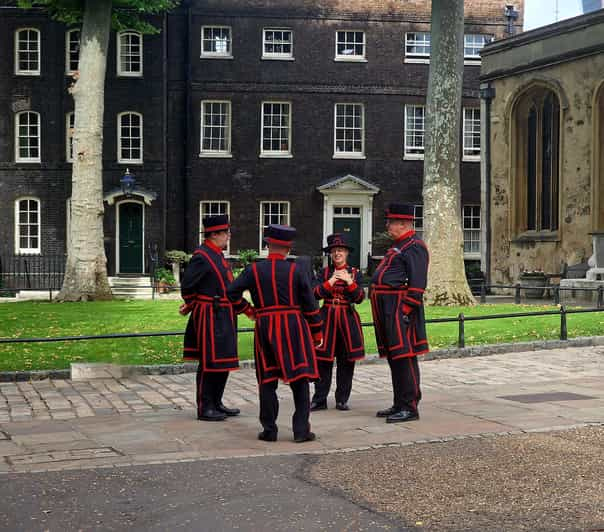
- The Tower of London was established in the 1070s by William the Conqueror and served as a prison, royal residence, and execution site for key monarchs.
- The Crown Jewels, housed in the Jewel House, feature the Imperial State Crown and the Koh-i-Noor diamond, symbolizing royal power and authority.
- The White Tower exemplifies 11th-century Norman architecture, with thick walls, narrow windows, and the impressive Royal Armories housing historic weapons and armor.
- The Tower’s history includes infamous imprisonments and tragic executions, such as those of Lady Jane Grey, Anne Boleyn, and Catherine Howard.
- The Tower offers a guaranteed timed entry for visitors, providing access to the Crown Jewels exhibition and other key sites, though it may not be suitable for individuals with mobility issues.
Iconic Tower of London
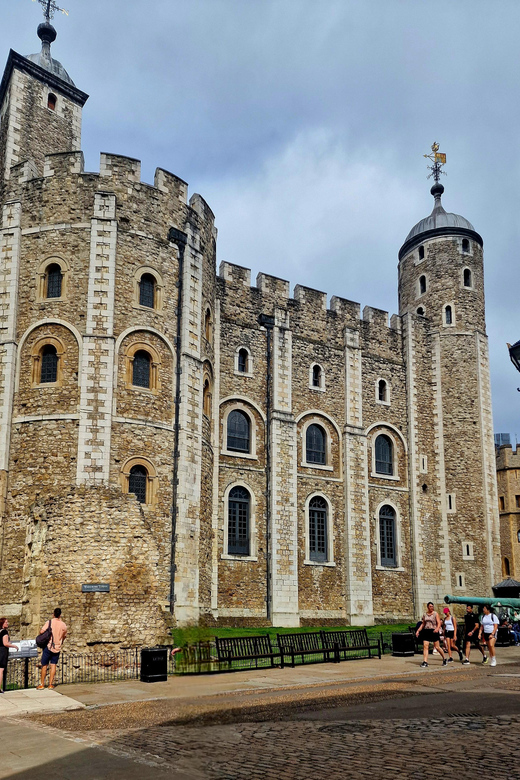
The Tower of London stands as an iconic symbol of England’s rich history, its imposing Norman architecture and captivating past drawing visitors from around the world.
Established by William the Conqueror in the 1070s, this fortress has served as a prison, royal residence, and site of executions over the centuries.
Key monarchs, from Henry III to Elizabeth I, have left their mark on the Tower, transforming it into a lavish palace or utilizing it for arms storage.
Today, visitors can explore the White Tower, marvel at the Crown Jewels, and walk the battlements, seeing the captivating stories that have unfolded within these ancient walls.
Fascinated by London's past? More historical tours we've covered
Glimpse of Crown Jewels
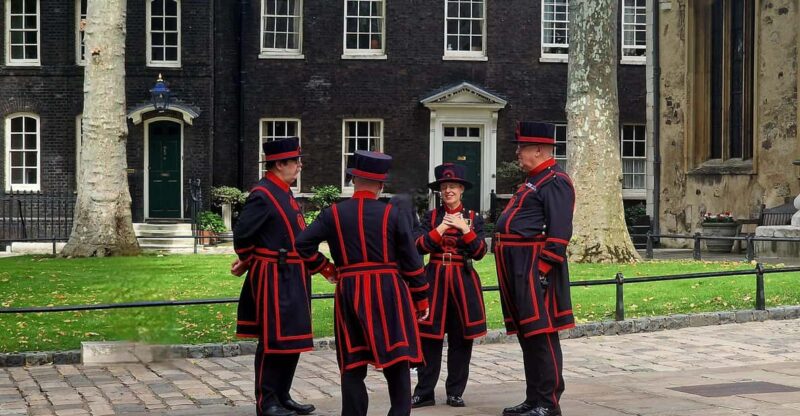
One of the highlights of the Tower of London tour is the chance to behold the Crown Jewels, an unparalleled collection of priceless treasures that have long captivated visitors from around the world.
Housed in the iconic Jewel House, the Crown Jewels exhibit features the stunning Imperial State Crown, the Koh-i-Noor diamond, and the Sovereign’s Sceptre, among other breathtaking pieces. Visitors can admire the exquisite craftsmanship and the sheer opulence of these royal symbols of power and authority.
The tour also provides access to the White Tower, where guests can explore the impressive tournament armor of King Henry VIII, further seeing the rich history and grandeur of the Tower of London.
Impressive Norman Architecture
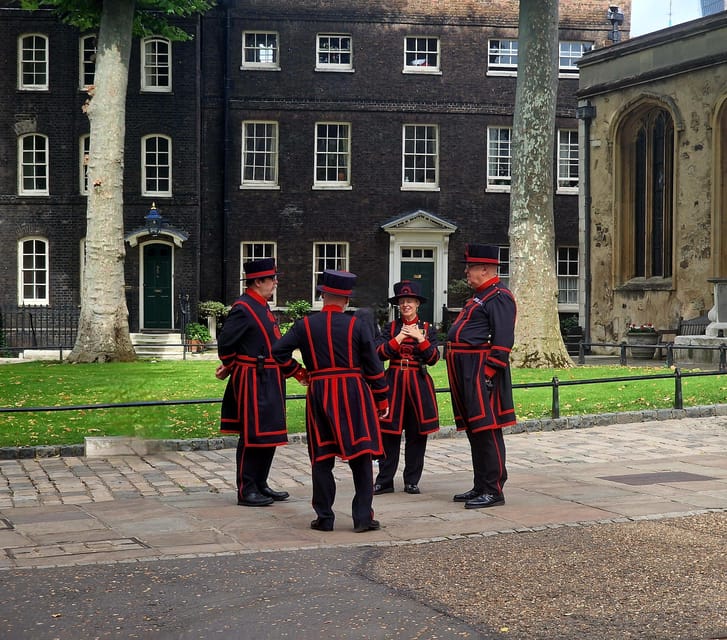
At the very heart of the Tower of London stands the imposing White Tower, a magnificent example of Norman architecture that has withstood the test of time. Constructed under the orders of William the Conqueror in the 11th century, this soaring stone structure boasts a distinctive design characterized by thick walls, narrow windows, and a formidable appearance that epitomizes the strength and power of the Norman conquest.
Visitors can explore the White Tower’s impressive interior, which includes:
-
The remarkable Great Hall, with its vaulted ceilings and grand proportions.
-
The Royal Armories, home to a stunning collection of historic weapons and armor.
-
The Chapel of St. John the Evangelist, a beautifully preserved Norman chapel.
-
Panoramic views of the Tower and the River Thames from the building’s upper floors.
Instruments of Torture Revealed
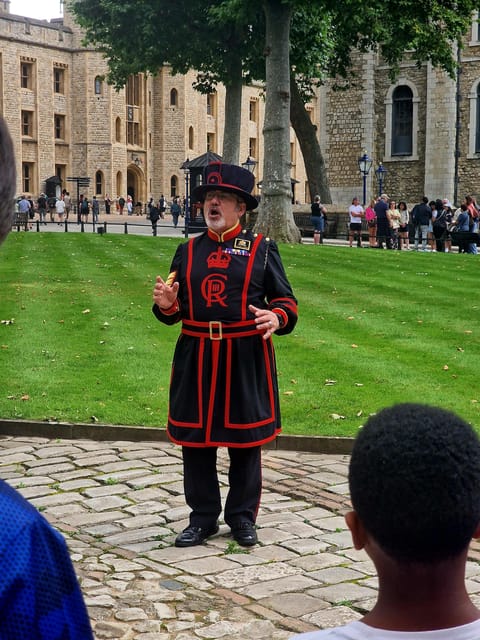
Descending into the lower levels of the Tower of London, visitors can explore the grim and chilling Wakefield Tower, where various instruments of torture used throughout England’s history are on display. These medieval tools of punishment and coercion provide a haunting glimpse into the darker chapters of the country’s past. From the iconic Iron Maiden to the bone-crushing Rack, the collection reveals the harsh realities faced by those who dared to defy the crown.
| Instrument | Description |
|---|---|
| Iron Maiden | An enclosed metal cabinet with spikes on the interior that would impale the victim |
| Rack | A wooden frame that could be used to stretch the victim’s limbs, causing excruciating pain |
| Thumbscrews | Devices that applied crushing pressure to the victim’s thumbs or fingers |
| Strappado | A method of suspension where the victim’s hands were tied behind their back, causing shoulder dislocation |
Legendary Ravens and History
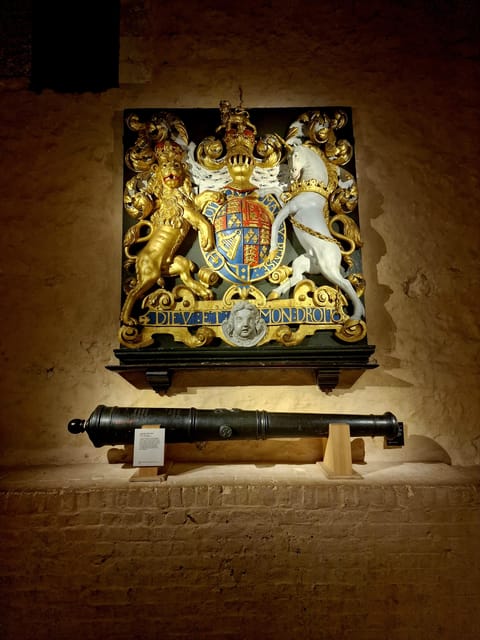
The Tower of London houses a longstanding tradition of housing a resident raven population, believed to be essential guardians of the crown and the kingdom. These legendary birds have been a fixture at the Tower for centuries, with records of their presence dating back to the 17th century. According to legend, if the ravens were to ever leave the Tower, the kingdom and the crown would fall.
The ravens are cared for by the Ravenmaster, a ceremonial role within the Tower’s Yeoman Warder community. Visitors can observe these majestic birds up close and learn about their important role in the Tower’s storied history.
Some key facts about the Tower ravens include:
-
There are typically 6 ravens residing at the Tower at all times.
-
Their wings are clipped to prevent them from flying away.
-
The ravens are fed a diet of raw meat, treats, and scraps.
-
The Ravenmaster ensures the ravens’ wellbeing and oversees their care.
Fortification and Royal Residence
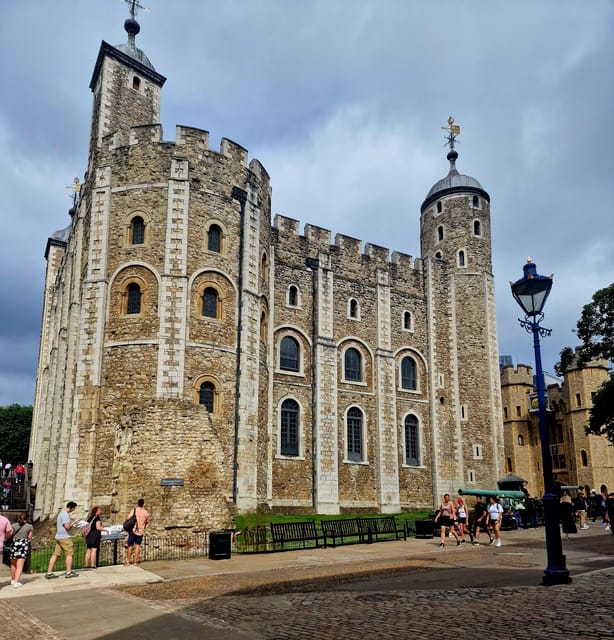
Constructed by William the Conqueror in the 1070s, the Tower of London has served as both a formidable fortress and a prestigious royal residence throughout its storied history.
Over the centuries, successive monarchs have fortified and expanded the Tower, transforming it into an imposing defensive structure. Key figures like Edward I and Henry III oversaw major construction projects that reinforced the Tower’s military capabilities.
Yet the Tower also functioned as a royal palace, with Henry III and other sovereigns investing in lavish living quarters and amenities.
This duality of purpose – fortress and residence – has defined the Tower’s unique role in England’s history, as it stood guard over the capital while also hosting the nation’s most powerful figures.
Imprisonment and Tragic Executions
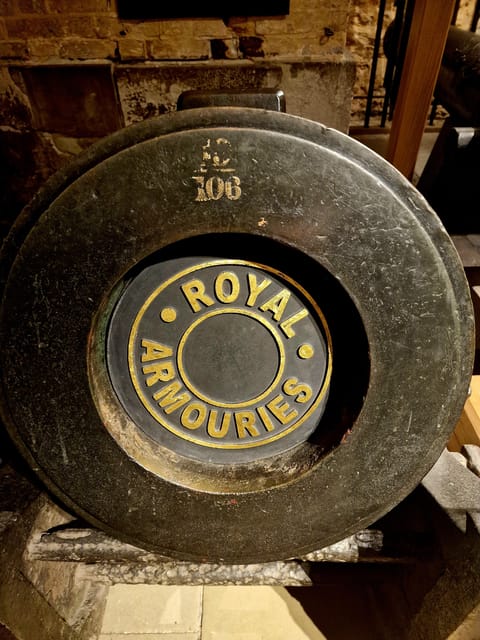
Although the Tower of London served as a formidable fortress and prestigious royal residence, it also functioned as a notorious prison, where many unfortunate souls met their tragic end on the executioner’s block.
The Tower’s grim history includes the mysterious disappearance of the Princes in the Tower, as well as the executions of several high-profile individuals:
-
Lady Jane Grey, the ‘Nine Days Queen,’ was beheaded in 1554 for her brief reign after the death of Edward VI.
-
Anne Boleyn, the second wife of Henry VIII, was executed within the Tower walls in 1536 on charges of adultery and treason.
-
Catherine Howard, Henry VIII’s fifth wife, also met her fate on the Tower’s scaffold in 1542.
The Tower’s infamy as a place of imprisonment and execution has become an integral part of its enduring legacy.
Practical Information and Accessibility
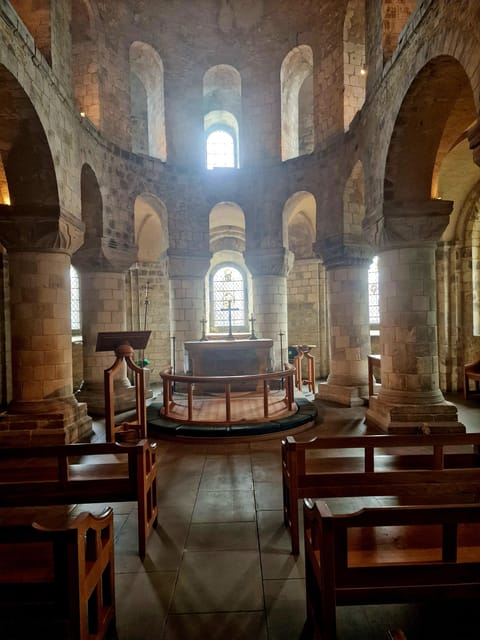
While the Tower of London’s history is filled with tales of imprisonment and tragic executions, the modern-day experience for visitors focuses on providing practical information and ensuring accessibility.
Guests can expect guaranteed timed entry to the Tower, including access to the Crown Jewels exhibition and other key sites like the White Tower and Raven House.
Although the tour isn’t suitable for those with mobility issues, visitors are encouraged to wear comfortable shoes and dress for the weather.
Strollers and scooters aren’t allowed, but independent exploration is permitted in restricted areas.
Guided tours may need to skip certain sections, but there’s plenty to discover throughout the Tower’s grounds and chapels.
Frequently Asked Questions
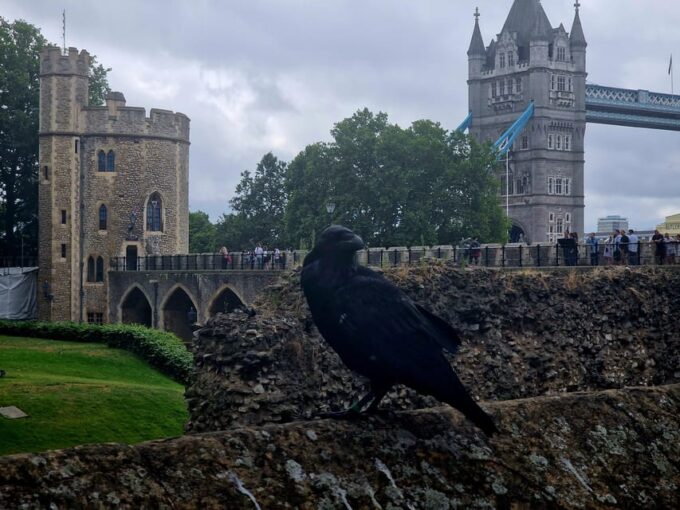
Can I Take Photographs Inside the Tower of London?
Visitors can take photographs inside the Tower of London, except in the Crown Jewels exhibition where photography is prohibited. Flash photography is generally allowed, but may be restricted in certain areas for preservation purposes.
Is There a Dress Code for the Tour?
There is no strict dress code for the Tower of London tour. Visitors are advised to wear comfortable, weather-appropriate clothing and shoes, as they’ll be doing a fair amount of walking during the 3-hour guided tour.
Are There Any Age Restrictions for the Tour?
The tour doesn’t have any age restrictions. Children of all ages are welcome, but parents should note that some areas may not be suitable for young children due to the historical nature of the exhibits.
Can I Bring My Own Food and Drinks Into the Tower?
No, visitors are not permitted to bring their own food and drinks into the Tower of London. Only bottled water is allowed, and there are on-site cafes and restaurants available for purchasing refreshments during the tour.
Do I Need to Purchase Tickets in Advance for This Tour?
Yes, it’s recommended to purchase tickets in advance for this tour. The tour includes guaranteed timed entry to the Tower of London, so booking ahead ensures you’ll get your spot.
Sum Up
The Tower of London is a living monument to England’s rich royal history.
Visitors can marvel at the dazzling Crown Jewels, explore the imposing Norman architecture, and uncover the tower’s dark past as a notorious prison.
From the legendary ravens to the tragic executions, the tower’s captivating history continues to enchant and educate all who step within its walls.
You can check if your dates are available here:More Historical Tours in London
- 6 Hour Stonehenge Archeological and Historical Audio Guided Tour
- Secret London: an Audio Tour About the Heritage of the Citys Russian Immigrants
- City of London Historical Walking Tour
- Dark History of London Tour
- London Landmark Walking Tour & Ride The London Eye
- The Natural History Museum Guided Tour in London
More Tour Reviews in London
- London to Southampton Cruise Port Including Stonehenge
- Great Artists : Impressionists, Monet & Private Art Studios
- The Sweet Spots of Covent Garden
- Luxury Private Day Hire London-London Stopover at Windsor & Hampton Court Palace
- E-Scavenger Hunt London: Explore the City at Your Own Pace
- London Westminster With Big Ben Private Professional Photo Shoot 60MIN
Not for you? Here's more things to do in London we have recnetly reviewed
- 2 Best Craft Beer Tours And Tastings In London
- 8 Best 3 Day Tours In London
- 25 Best Cruises And Boat Tours In London
- 20 Best Christmas Experiences In London
- 25 Best Dining Experiences In London
- 20 Best Full-Day Tours In London
- 2 Best 2 Day Tours In London
- 2 Best Pasta Experiences In London
- 4 Best Private Car With Driver Services In Brighton
- 2 Best Private Car With Driver Services In Crawley
- 3 Best Private Car With Driver Services In Epsom
- 3 Best Private Car With Driver Services In Guildford
